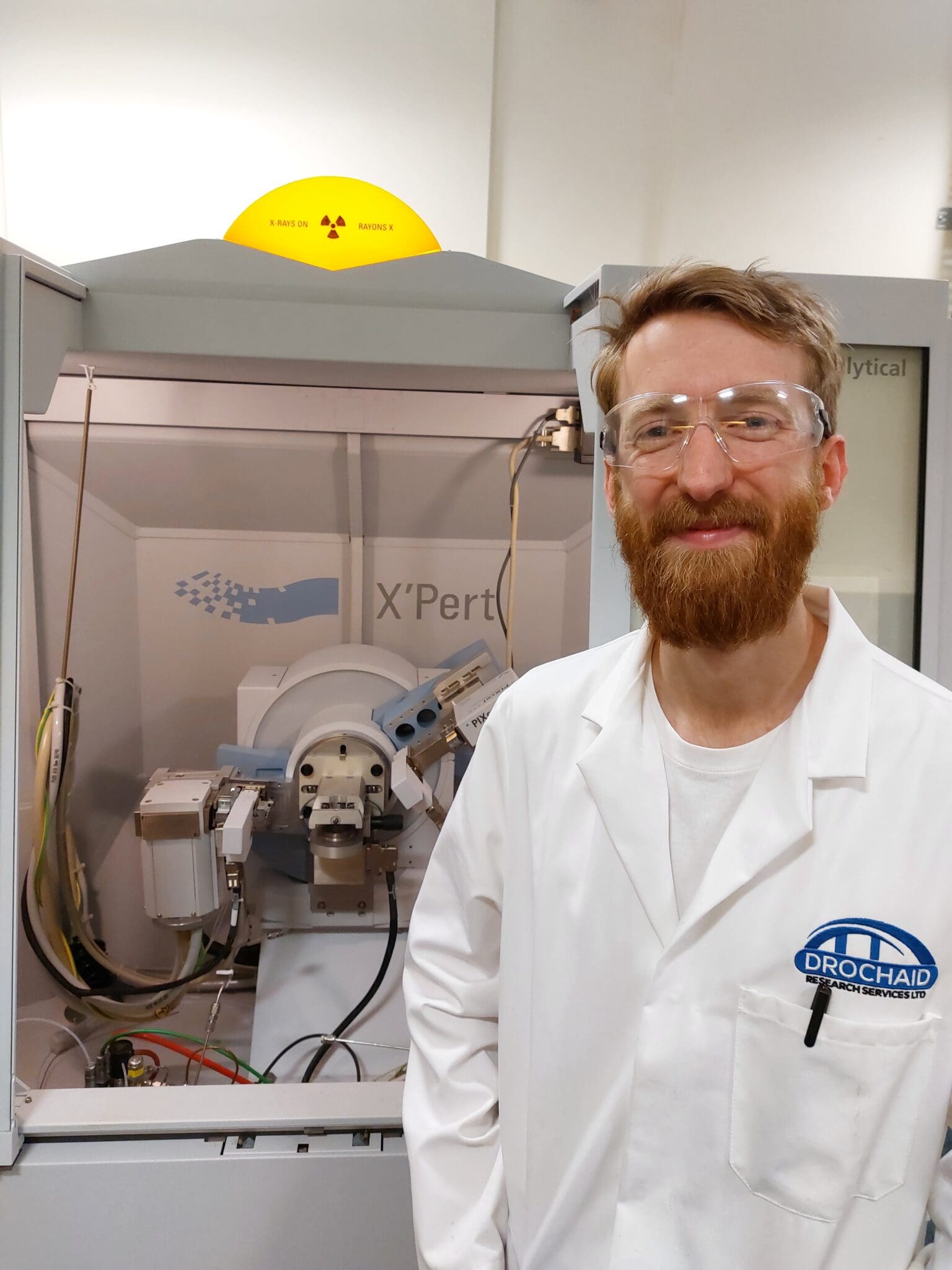Characterisation
We can help you optimise your process through detailed characterisation of functional materials, including under operating conditions. This greater insight into structure-performance relationships can yield step-change improvements in material design.
Temperature Programmed Techniques and Surface Area Measurement
The Micromeritics 2920 is designed to chemically characterise the surface and bulk chemical properties of solid materials. Typical experiments that can be carried out on this instrument include temperature programmed reduction (TPR), temperature programmed oxidation (TPO) and temperature programmed desorption (TPD) as well as pulse chemisorption of gases and liquid vapours and temperature programmed surface reactions (TPSR). We have expertise in using a wide variety of probe molecules such as CO, N2O, NO, CH4, NH3 and CH3OH. The Micromeritics 2950 affords all the capabilities of the 2920 (except the vapour chemisorption) but it can additionally allow experiments to be carried out at high pressure, up to 50 bar. A Pfeiffer Thermostar quadrupole mass spectrometer is connected to both instruments so gaseous products can be monitored as a function of time or sample temperature. Both instruments are connected to a custom designed gas manifold system which allows us to select and feed up to 8 different gases per instrument.
Static Chemisorption
A Micromeritics ASAP 2020 is available for both physisorption and static chemisorption measurements. In the case of chemisorption, isotherms are determined using active gases to obtain quantitative data on parameters such as active metal area, average crystallite size and active metal dispersion. A heated manifold / vapour option allows us to follow changes in physico-chemical properties of supports and catalysts after in-situ treatment with water or hydrocarbon vapours. In addition, a cryostat option enables controlled chemisorption studies at sub ambient temperatures.
BET Surface Area and Pore Size Analyser
A Micromeritics Gemini VI is available for surface area measurements on solid materials. The Gemini can be used to determine BET surface area (Single and Multi-point), Multi-point Langmuir surface area, t-Method micropore volume and area, BJH method, Dubinin, M-P method and Total pore volume.
Thermal Analysis Combined DSC/TGA/MS
A Netzsch STA 449 F1 Jupiter® is used to perform thermal stability, decomposition studies, probe phase transitions, and melting processes. Our STA 449 F1 Jupiter (left) can perform simultaneous Thermogravimetric (TG) Differential Thermal Analysis (DTA)/Differential Scanning Calorimetry (DSC) analyses, with a balance resolution of 0.025 μg over the temperature range 25 – 1550 °C. There is also the capacity to perform Pulse Thermal Analyses (PTA) experiments. The system is equipped with an optional water vapour furnace for conducting experiments under atmospheres of water and with the addition of the custom designed multiple gas manifold, measurements in corrosive gases can be obtained. The STA 449 F1 Jupiter is coupled with a Mass Spectrometer; the QMS 403 Aëolos® quadrupole mass spectrometer with a heated capillary inlet system for routine analysis of gases and, in particular, volatile decomposition products of thermal analysis.
Infrared Spectroscopy
Our Nicolet Avatar 370 FT-IR spectrometer is located in a glove box for the analysis of extremely air sensitive and hygroscopic materials. The Avatar 370 is fitted with KBr optics, giving a low frequency cut-off of around 400 cm-1, and can operate with MCT or DTGS detectors. Samples can be analysed as liquids (solution cell) or solids (KBr discs) in transmission mode. Ancillary modules (DRIFTS and PAS) can be housed in the sample compartment and allow the study of a diverse range of materials. Materials can also be studied under reactive gas atmospheres and at elevated temperatures using custom-built DRIFTS reaction chambers.
Our Thermo Nicolet Nexus FT-IR Spectrometer is fitted with CsI optics providing a broader spectral range (down to 200 cm-1). The Nexus contains two detectors (MCT and DTGS fitted) making it possible to switch quickly between the two if required. Sampling techniques are similar to the Avatar; comparable experiments can be carried out on the two instruments. Additionally, the Nexus can accommodate a customised autoclave, fitted with spectroscopic windows, for the study of solutions at elevated temperature and pressure.
A VERTEX 80v FT-IR spectrometer is coupled to a RAIRS system located in a dry box. The VERTEX 80v has an evacuated optics bench that can eliminate atmospheric moisture absorption for ultimate sensitivity and stability; enabling demanding experiments such as high resolution, ultra fast rapidscan, step-scan, or UV spectral range measurements. The PM RAIRS system (opposite) allows the study of flat surfaces under pressures of highly IR absorbing gases, without the need for complex background subtracted.
Our Bruker ALPHA-P FT-IR spectrometer with Diamond ATR sampling module provides rapid analysis of solids or liquids at ambient temperature and pressure without the need for sample preparation
Raman Spectroscopy
Our LabRam HR800 Raman microscope has multiple excitation lines (325, 457, 488 or 514 nm) and automated sample stage for mapping in 3 dimensions. Our Raman set-up can be coupled with several custom-built high-pressure reaction chambers, fitted with sapphire windows, for in operando studies. A wide range of gases, including hydrogen and carbon monoxide, can be passed through a bed of material/catalyst at a controlled rate and over a broad temperature range (90‑1200 K). The exit gas stream is coupled to an online GC (or MS) allowing for the determination of structure function relationships in catalysis.
Surface spectroscopy
The Kratos Axis Ultra DLD XPS instrument is utilised to investigate the surface elemental composition of solid materials. It also provides information about the chemical state of the surface constituents. The instrument integrates all the latest development in electron optics, including the in-lens charge compensation and the magnetic lens, resulting in an instrument with unsurpassed performance. In addition to the standard monochromatic Al and the achromatic Mg/Al sources, the instrument is uniquely equipped with an Ag Lα monochromated source; advantageous for the removal of Auger contributions but also offers the possibility of analysing of deeper layers (see opposite). The system has an integrated custom Gas Reaction Chamber (RT to 1000 °C; vacuum to 6 bar) for sample preparation.
Powder X-ray diffraction
XRD is a powerful technique for characterising the bulk properties of solids such as heterogeneous catalysts. Our PANalytical X’Pert Pro MPD is fitted with a cobalt X-ray tube and a Pixcel detector. Air stable powders can be analysed on a spinner stage. An Anton Paar reaction chamber, XRK900, can be used to follow structural changes under controlled atmospheres, both for activation and under reaction conditions, providing information on bulk phase transformations. Gases are delivered to the in situ chamber at a controlled rate via a series of mass flow controllers. The exit gas stream can be analysed by an on-line GC.
High Pressure NMR
Our high pressure NMR tubes are constructed from single crystal sapphire bodies with precision machined titanium heads. Capable of withstanding pressures of 50 bar at 150 °C the high pressure NMR capability enables speciation of catalyst solutions under reaction conditions of commercial relevance
In This Section
- Analysis
- Characterisation
- Design and Synthesis
- Testing

In This Section

“Working closely with the St Andrews group has been highly beneficial to Oxis Energy; their all-round contribution has undoubtedly accelerated the development of our superior lithium sulphur battery”

